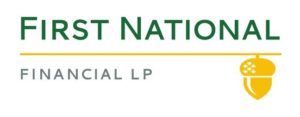Rates
Understand the different mortgage rate and obtain the best rate.
Fixed and variable rate; term of 1, 3, 5, or 10 years; amortization period; closed or open loans: these are all concepts you will need to understand before signing a mortgage contract.
Here’s how to find your way… and how to get the best rate thanks to Multi-Prêts!
As of 14/01/26
Today's mortgage rate
Multi-Prêts rates
1 year fixed
3 years fixed
5 years fixed
5 years variable
7 years fixed
Fixed or variable rate: which is the best option?
Although fixed-rate mortgages are still popular, you may find it more advantageous to consider a variable rate mortgage. Here’s how it works.
Fixed-rate
A fixed-rate mortgage guarantees the same interest rate for the term. With a fixed rate, you, therefore, ensure that you always pay the same amount to repay principal and interest, regardless of the level of market volatility. For example, if you choose a 5-year fixed-rate mortgage at 4.94%, your interest rate will be frozen at 4.94% for five years.
According to CMHC, the majority of Canadians opt for a 5-year fixed rate.
Benefits
- Low risk: ideal for those with low-risk tolerance.
- Facilitates budgeting.
Disadvantage
- In general, the fixed rate is higher than the variable rate when the mortgage is taken out.
Variable rate
The Variable Rate Mortgage follows the market, the policy rate, and the Bank of Canada’s target for the overnight rate. Thus, it can go up or down from one day to the next, influencing monthly payments.
However, an increase in the policy rate (and therefore in interest rates in general) rarely significantly impacts variable rates. To illustrate this point, let’s take the example of a 0.25% increase in the key interest rate: for a $300,000 mortgage, the monthly payment will increase by $36, a relatively negligible amount for most people.
But beware: the variable-rate mortgage may be less profitable for those who acquire a property whose value is close to the limit of their financial capacity. In such cases, an increase in the interest rate could pose a real problem.
Advantage
- Interest rates are generally lower than fixed rates.
Inconvenience
- Higher risk: Since rates fluctuate, variable rates may exceed fixed rates during your term.
- More difficult to budget.
The term
The term is the duration of the current mortgage contract. Although the 5-year period is the most popular, you can choose between 1 and 10 years. If the principal and interest on your mortgage are not paid in full by the end of your term, you will have to renew your mortgage.
At the end of your term, you will have the freedom to renew your mortgage with your current financial institution or deal with another lender.
The Multi-Prêts advantage
Don’t forget to contact our team of West Island mortgage brokers when renewing your mortgage: we will negotiate the best terms and interest rates for you.
Amortization period
The amortization period is the specified number of years it will take you to pay off your mortgage (principal and interest) in full. This is indicated on your mortgage contract. Some financial institutions allow their clients to opt for an amortization period of up to 30 years.
Note that the longer the amortization period, the more you will minimize your monthly payments (but you will pay more interest). Conversely, the shorter the amortization period, the higher your monthly payments will be (but you will save a lot of interest).
At the end of your term, you will be able to reduce the amortization period if necessary.
The Multi-Prêts advantage
Our brokers will help you determine the ideal amortization period. Our goal is for you to pay as little interest as possible while having monthly payments that respect your budget.
What does your mortgage rate depend on?
Several factors influence mortgage rates.
The economic situation
When the economy is experiencing strong growth, more companies want to expand. To do so, they need financing, for which they turn to financial institutions. The mortgage lenders have the freedom to charge higher interest rates to borrowers, including individuals. Conversely, when the economy slows down, loan applications decline, which drives rates down.
Interest rates elsewhere in the world
Since Canada’s economy is linked to that of other world powers, such as the United States, interest rates elsewhere in the world have a direct impact on ours.
The key rate
The Bank of Canada adjusts its key interest rate eight times a year up or down to stabilize the economy (to curb inflation or encourage banks to lend, among other things), which influences interest rates.
The risk of non-reimbursement
The most significant risk for the lender is if the borrower does not pay his monthly payment. The higher the risk, the higher the interest rate offered to the borrower is likely to be.
To determine the level of risk, the lender will consider, among other things, the borrower’s credit rating (which is a good indicator of the borrower’s debt repayment habits), the borrower’s debt-to-equity ratio, and the amount requested for the loan.
How to get the best mortgage rate?
The best way to get the best mortgage rate is to do business with a mortgage broker. But in addition to using a broker’s services, you can also use a strategy to get the best possible rate.
Plan six months in advance.
If you soon need to renew your mortgage or take out a new one, you can start the process six months before D-Day. Some financial institutions offer you the opportunity to take advantage of the best mortgage rate during this period.
Opt for a closed mortgage.
Closed mortgages generally offer lower interest rates than open mortgages. Even though they are “closed”, these mortgages allow the borrower to prepay an amount between 10% and 20% depending on the lender of the principal amount borrowed each year without penalty to speed up payments (and ultimately pay less interest).
However, suppose you expect to receive a significant amount of money within a few months of signing your mortgage. In that case, it will be more beneficial for you to choose an open mortgage, which allows you to reimburse the amounts you want at any time.
The evolution of mortgage rates over time
Since 1969, the most popular mortgage rate, the fixed-rate with a 5-year term, has experienced various variations. According to the Bank of Canada, the rate averaged 4.79%, five years later, it rose to 12%, only to fall back to 10.25% in 1977. A few years later, the United States recession caused interest rates to skyrocket in 1981, the 5-year fixed-rate broke records, reaching 21.46%.
Fortunately for the owners and future owners, the latter finally dropped to 12.50% in 1983, a more acceptable level at the time (but one that would be unthinkable today). Since then, the 5-year fixed-rate has fluctuated slightly, with a general downward trend. With the pandemic in 2020, interest rates have fallen further, encouraging a boom in the real estate market.
In 2024 we look forward to rates falling again with the decrease in the inflation rate. The 5-year rate is currently hovering around 5%.
Mathieu Lebrun’s Team
3 simple steps to receive the best offer from your mortgage broker



or
Financial institution partners
They trust us











